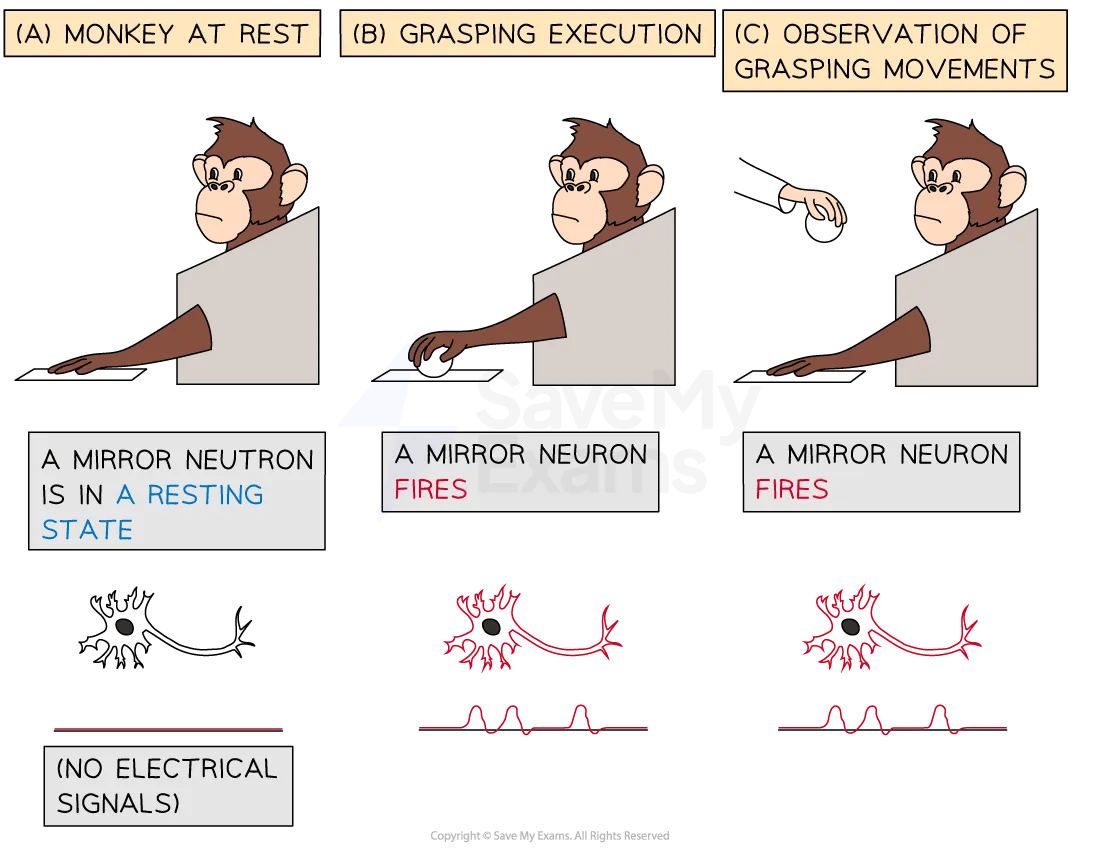What are mirror neurons?
- Mirror neurons are brain cells which imitate i.e. ‘mirror’ the actions of other people e.g. As Stanley observes Hilda reach for an Eccles cake the neurons in his motor cortex that are used when he reaches for a cake also fire i.e. they are activated
- Mirror neurons were the outcome of a serendipitous discovery by Rizzolati et al. (2002) via the study of macaque monkeys’ brain activity but its application has been widened to include humans
- The mirror neuron system has been localised to the inferior frontal gyrus of the brain Kilner et al. (2009)
- It is thought that mirror neurons have enabled human beings to form social networks and to bond with each other - both essential tools for survival as they build up alliances and safeguard the individual from threat by hostile groups i.e. 'Don’t attack him, he’s one of us!'
- Mirror neurons may signal another persons’ intention as well as reflecting their actual, observed behaviour e.g. 'It’s almost the end of the lesson so I expect Miss Trunchbull to clap her hands five times to get us to be quiet (hence the neurons in the ‘clap hands’ region of my motor cortex are being activated at the mere thought of this)'
- Mirror neurons are also implicated in empathy: fMRI research showed that participants’ anterior cingulate cortex and inferior frontal gyrus were activated when observing emotions in other people (Gallese, 2001)

Mirror neurons fire when an action is carried out or when the same action is observed.

